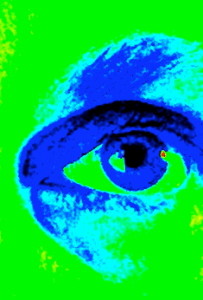Walking In Someone Else's Shoes
Invisible Physical Conditions
Arthritis, Multiple Sclerosis, CRPS, Migraines, Fibromyalgia, high functioning Autism…. The list is long. And media is always slow about getting the facts across to people. Perhaps too few are reading what is shared on the latest information about chronic illnesses. Honestly, this is another example of sleepwalking, isn’t it? For why bother thinking about another at all? Until it is you or your loved one that is disabled. And no reason to consider all the manifestations of physical conditions, again, unless you or your loved one is experiencing a condition that is not obvious to the naked eye, to the common observer on the street. So, if you don’t have time to learn about why someone that looks perfectly fine to your point of view is struggling and could use, at least, your understanding… stop reading here.
If, on the other hand, you and someone you care about could use this article …to share with those you know that cannot accept your physical condition; or maybe just to expand your viewpoint a little bit more and learn some more coping techniques… Read on.
Nothing So Strange As Folk
My spouse’s father used to say this all the time…. “Nothing so strange as folk.” And frankly, this is perhaps a careful way of putting it! But over my experiences in this life, I have also come to see the saying from the perspective that of course everyone is a stranger. We are all focused in on our own experiences, conditions, dreams, and desires… and rightly so. We cannot not truly know anyone until we know the very ‘person’ looking back at us in the mirror each day. Maturity evolves and hopefully one begins to recognise that judging another is just as awkward as when another judges you. Meanwhile, we are often guilty of harshly judging ourselves sometimes too! Where does this uncomfortable circle lead?
All sides, and there are ALWAYS more than just two sides, have meaning for the side that is giving the perspective. Compassion is easily given, usually, by that human with the hidden disability. They know you cannot see their condition because you probably have never even heard of it. How do they know this? Because they never heard of it either, before they got ‘the diagnosis’! You may be under a lot of pressure at work or in an important relationship. Who has time to know about all the ways the physical is imperfect… when after all, the dream is perfection in our modern society. So, rather than educate about the many conditions, this article is meant to educate that the stranger on the street may have as much or more going on in their little world as you have.
Mirror, Mirror
The photograph I share with this story is of my face while walking. I chose it, and actually the photo inspired this writing, because I look so ‘normal’ and happy as well! in the picture. The list of secondary physical conditions that accompany my presumed ‘diagnosis’ of Ankylosing Spondylitis is amusingly long. I laugh, now, understanding that this stranger, ankylosing spondylitis, has been sneaking in and about my house for far longer than I or any of my doctors recognised.
Imagine your life right now and there have been illnesses here or there, maybe some injuries, but nothing you couldn’t handle. Then you cross some imaginary border that you never saw coming …when the doc comes into the exam room and announces a ‘diagnosis’ like it is the child you have been waiting to birth.
For the physician, see, all those minor complaints have coalesced into a known condition. He or she can name it for you. For the patient, this news is like opening the front door of your home to see a really dangerous looking character standing on your front porch. . . waiting to come inside. No! I didn’t invite you, you say. He pulls out some papers… lab results, research statistics, medical protocols, …it all goes murky in your vision. You come back in to the exam room reality as the smiling physician hands you some prescriptions and a careplan guide for your ‘diagnosis’. Oh, and a list of various numbers or clinic website links you can go to for more information…. Because the doc is busy with way too many patients and your appointment time is up.
Now, I can’t say about you, but for me…this is when I get the eerie feeling that I am walking in someone else’s shoes!!! Who is this person in the mirror? Everyone has their own variety pack of coping mechanisms. Key word there: mechanisms, because most of us have not penetrated the source of our thinking, much less the source of our emotions and reactions. At this point in the article, you might want to pause for a second and ask yourself, “wait..what does she mean the source of my emotions? I am human; I Am emotional, right?” My apologies to those of you who already have this down that you have a say in your behavior. But this would be the upshot of this article! Yes, we DO have a say in our thinking, which is why self-improvement activities get so much attention.
But Really?
Adaptability is touted as the penultimate talent of the human species. However, change, you may have observed, does not seem to come easily to most people. Especially when the change is something entirely unacceptable to the individual. For the traveler experiencing no physical impediments, just having to slow down to wait for someone to make it through the door or up a curb, can seem extraordinarily frustrating. Imagine how the person in that body feels about it!
For your friend or loved one whose physical condition is not visible, imagine having to explain for the tenth, 100th, 1000th …time! the reasons why they cannot go out for a movie tonight even though you are having such a grand time with them walking in town today. In case you missed it, they had to save up their tasks and energy, and balance them, so that they could enjoy this walk with you today. You must be very special to them. Because now it may be a week or possibly longer before they can do something like this again.
For the living breathing soul going through the lessons that this stranger, ‘the diagnosis’, has brought for their evolution …Point of View is all of this and more. The stranger may have moved in. The stranger may be the reflection in your mirror. The stranger may be the life you hadn’t planned on. But just like the unexpected last child, becoming aware of your Point of View is a conscious choice to awaken to a greater picture of the purpose in your life, …a conscious choice to adjust your point of view. Yes, it does take a hero of sorts, this attitude adjustment. Guess what? The reason the hero in all the stories tends to be reluctant…. is that what is required of them now is not what they planned.
Oh hey, that sounds like a stranger entered their reality and imposed its condition on them.
The Picture
If you enjoy hero tales, then you remember that there needs to be a guiding principle, a higher standard, or simply a reason to look beyond one’s small world. Or the hero will not pull the story’s desired ending off. The hero could even be the antagonist (aka bad guy) instead. I mentioned conscious choice above like it is an everyday thing. People do seem to think it is; yet, the very fact that change comes with effort reveals that actually conscious choice is unfamiliar. Aw shux, give it up then; I can be the bad guy. There must be a sequel where I win the lotto, right?
If you are the bad guy, I am surprised you read this far. Truly impressive, that would be. I suspect that, in truth, you are the hero of your story. Every day, use your mirror to remember who you really are. Discover the mystery behind this curious condition, the stranger, that has caused you to change all your life plans. Why? What else might I be instead? ‘The diagnosis’ I received like a wrapped package on my doorstep has insisted I change everything about how I live life. But please hear me when I say this: I could not have done this alone. My personal coping skills evolved into conscious choice… by the daily practice of looking to see the Greater in the picture I have.
The smile on my face above is not because of anything in the physical condition. Believe it or not, I am in physical pain there and laughing at the irony of it. I am smiling because I am discovering the way to live my own truth through the house, the body, the irony! I have been gifted to live in. And this hero’s journey, though immensely challenging, has morphed into a wondrous self discovery. Now THAT is a gift.
The next time, someone gets in your way …stop, pause, and check in. What are you going to choose about your point of view of this momentary awareness? Maybe walk in their shoes or alongside them a few steps of the way? For just a little bit, you could be their hero of the day. How sweet is that? In so doing, you might also discover that your own problems aren’t as heavy as you imagined.
~~~~~~~~~~~~~~~~~~~~~~~~~~~~~~~~~~
The Guest House
This being human is a guest house.
Every morning a new arrival.
A joy, a depression, a meanness,
some momentary awareness comes
As an unexpected visitor.
Welcome and entertain them all!
Even if they're a crowd of sorrows,
who violently sweep your house
empty of its furniture,
still treat each guest honorably.
He may be clearing you out
for some new delight.
The dark thought, the shame, the malice,
meet them at the door laughing,
and invite them in.
Be grateful for whoever comes,
because each has been sent
as a guide from beyond.
¬A teaching story of Rumi translated by Coleman Barks©
























